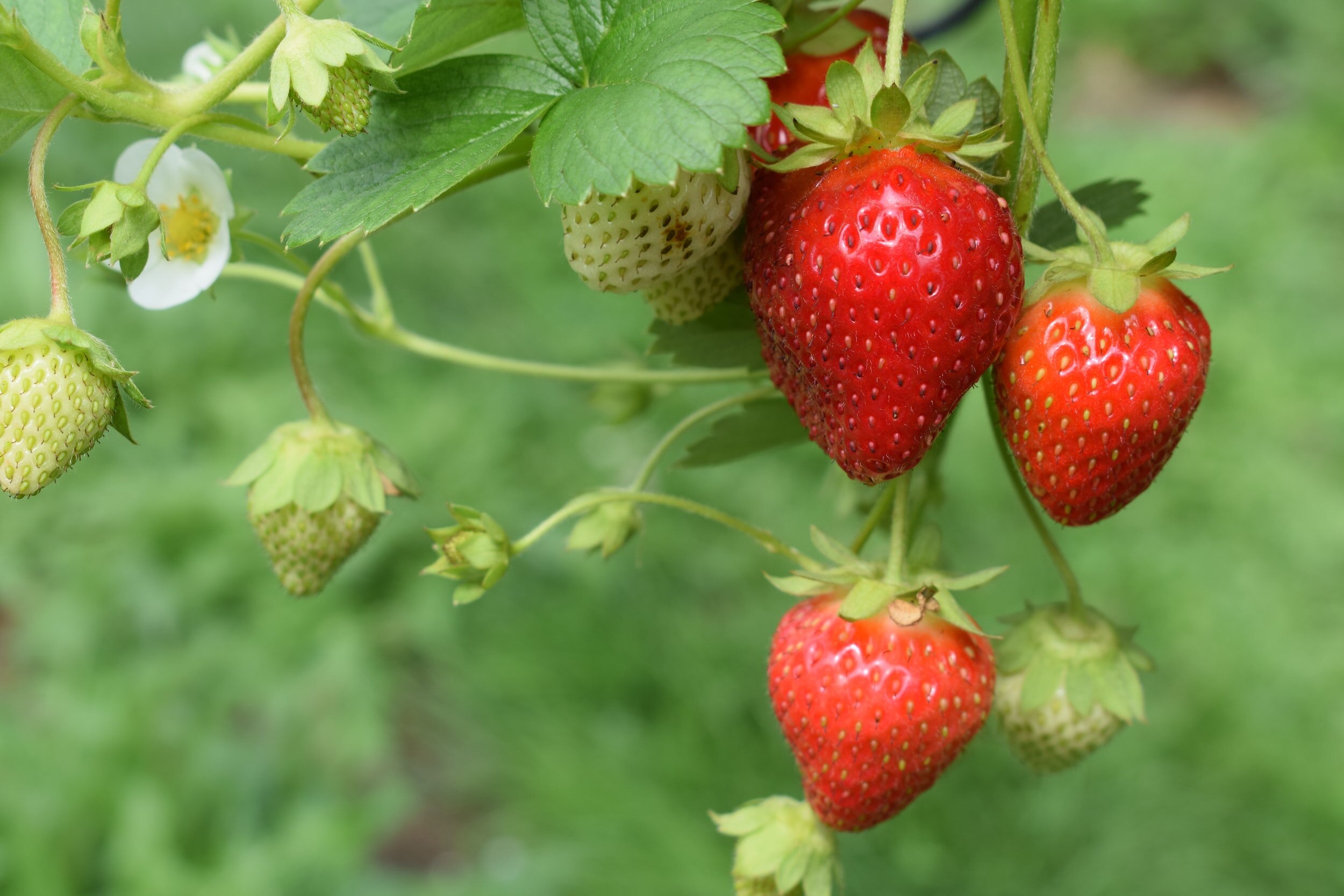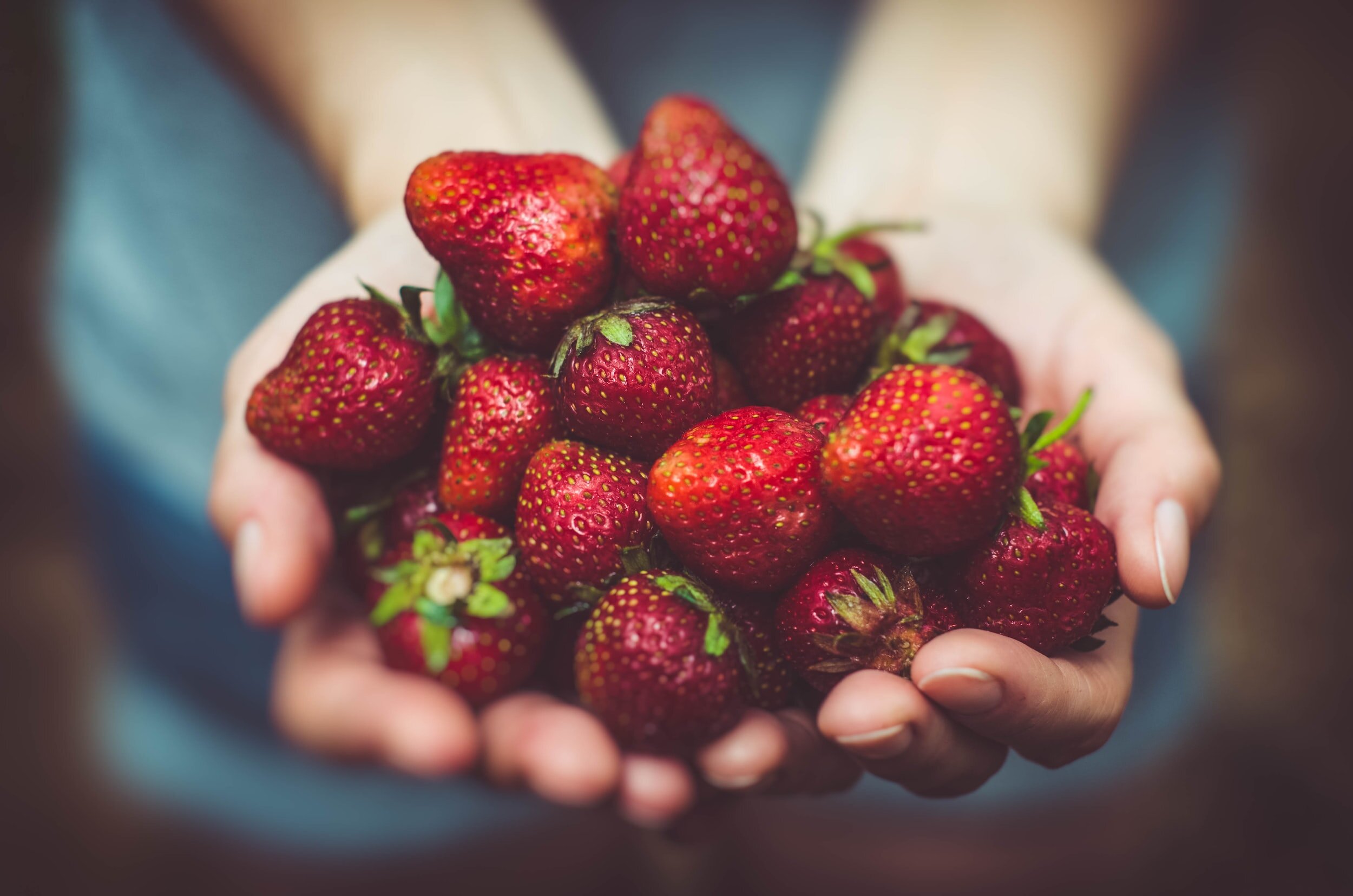BACKYARD GARDENING MADE SIMPLE
Step-By-Step Tips For Growing, Harvesting, Storing, and Using Strawberries [Guide]
Growing strawberries in your backyard is the gateway to gardening. There's nothing quite like the taste of freshly picked strawberries, they just don’t compare to store-bought at all. In this comprehensive guide, we will walk you through the process of growing strawberries, from choosing the right varieties to harvesting the ripe fruits.
Growing strawberries in your backyard is the gateway to gardening. There's nothing quite like the taste of freshly picked strawberries, they just don’t compare to store-bought at all. In this comprehensive guide, we will walk you through the process of growing strawberries, from choosing the right varieties to harvesting the ripe fruits.
What Kind of Strawberries Should You Grow?
When it comes to strawberries, there are several popular varieties to consider. Each variety has its own unique characteristics, including fruit color, size, shape, and flavor. Some popular varieties include 'Albion,' known for its large, bright red berries with a sweet taste, 'Seascape,' which produces firm and flavorful strawberries, and 'Eversweet,' a variety that lives up to its name with its exceptionally sweet fruits. Additionally, consider the plant size and growth habit of each variety to ensure it fits your available space and gardening preferences.
Albion: Albion strawberries are a favorite among gardeners and berry enthusiasts alike. These large strawberries boast a vibrant bright red color that is visually appealing. When you take a bite, you'll experience a burst of sweetness accompanied by a delightful hint of tartness. With their juicy texture and balanced flavor, Albion strawberries are perfect for enjoying fresh or using in various culinary creations. You can typically harvest Albion strawberries in mid to late season, usually from June to July, depending on your specific growing conditions.
Seascape: If you're looking for a strawberry variety with exceptional flavor, Seascape is an excellent choice. These medium to large strawberries feature a deep red color that is visually enticing. When you taste Seascape strawberries, you'll be treated to a sweet and aromatic flavor that is sure to delight your taste buds. Harvest time for Seascape strawberries typically falls in the early to mid-season, typically from May to June.
Eversweet: True to its name, Eversweet strawberries offer an exceptional level of sweetness. These large, round strawberries exhibit a deep red color that hints at their luscious flavor. With each bite, you'll savor the intense sweetness that sets Eversweet strawberries apart. Their juicy texture further enhances the delightful taste experience. Eversweet strawberries are usually ready for harvest in the mid to late season, typically from June to July.
Jewel: Jewel strawberries are a real gem in the world of strawberries. These large berries showcase a bright red color that catches the eye. When you taste a Jewel strawberry, you'll discover a harmonious blend of sweetness and subtle tanginess. Their refreshing flavor profile makes them a popular choice for eating fresh or incorporating into desserts and other culinary delights. Jewel strawberries are typically ready to be harvested in the early to mid-season, usually from May to June.
Ozark Beauty: Ozark Beauty strawberries offer a delightful combination of visual appeal and taste. These medium to large strawberries exhibit a bright red hue that signifies their ripeness. Their round shape adds to their allure. When you bite into an Ozark Beauty strawberry, you'll be greeted with a burst of sweetness and a juicy texture that is truly satisfying. Ozark Beauty strawberries are typically harvested in the mid-season, usually around June.
Can you grow strawberries from seed?
When it comes to growing strawberries, there are two methods: using strawberry crowns or growing from seed. Growing strawberries from seed is uncommon because it requires more time and care compared to using crowns.
Advantages of Growing Strawberries from Seed
Growing from seed offers a wider range of strawberry varieties to choose from compared to the limited options available as crowns. Seeds are generally less expensive than buying established plants or crowns. Starting strawberries from seed allows you to experience the entire growth process, from germination to harvesting.
How to Grow Strawberries from Seed
Start seeds indoors in seed trays or pots using a seed-starting mix. Maintain proper moisture and temperature for germination. Once the seedlings develop a few true leaves, transplant them into individual pots or a prepared garden bed. Follow the same care and maintenance practices as with strawberry crowns, including proper watering, fertilization, and pest control.
Strawberry Crowns
Strawberry crowns are the small plants that are typically sold in nurseries and garden centers. They consist of the roots and a cluster of leaf stems (known as the crown) from which the strawberry plants will grow.
Advantages of Strawberry Crowns
Using crowns allows you to skip the germination and early growth stages, giving you a head start in the growing process. By purchasing specific strawberry varieties as crowns, you ensure the consistency and traits of the variety you desire. Strawberry crowns usually produce fruit sooner than plants grown from seed, allowing you to enjoy your strawberries earlier.
How to Plant Strawberry Crowns
Prepare the soil by loosening it and removing any weeds or debris.
Dig a hole large enough to accommodate the roots and crown of the strawberry plant, making sure the crown is at soil level.
Space the plants according to the recommended guidelines for the specific variety.
Water thoroughly after planting to help the crowns establish.
Whether you choose to grow strawberry crowns or grow strawberries from seed depends on your preferences, time availability, and desired variety selection - but I recommend growing strawberries from crowns.
What are bare root strawberries?
Bare root strawberries are strawberry plants that are sold and shipped without soil around their roots. Instead, the roots are typically wrapped in a moisture-retaining material, such as sphagnum moss or peat moss, to keep them hydrated during transportation.
How To Plant Strawberries
Strawberries thrive in well-draining soil with a slightly acidic pH ranging from 5.5 to 6.5. Start by preparing the soil before planting your strawberry plants. Remove any weeds and incorporate organic matter, such as compost or well-rotted manure, to improve soil fertility and drainage. Strawberry plants can be propagated using runners or purchased as bare-root plants. Plant them at the recommended spacing and depth, ensuring the crown is level with the soil surface.
Strawberries need full sun exposure to thrive and produce an abundance of fruits. Ensure your strawberry patch receives at least 6-8 hours of direct sunlight per day. Consistent moisture is crucial for strawberry plants, but they don't like soggy roots. Water your strawberries deeply, providing enough moisture to reach the root zone, and allow the top inch of soil to dry out between watering sessions. Applying mulch around the plants helps retain moisture, suppress weeds, and prevent direct contact between the fruits and soil.
Taking Care of Strawberry Plants
Regularly monitor your plants for signs of pests or diseases. Remove any yellowing or damaged leaves to promote good airflow and prevent the spread of diseases. Additionally, thinning strawberry runners is crucial to ensure stronger plant development. Pinching off strawberry blossoms during the first year redirects energy towards root growth, resulting in more robust plants and higher yields in subsequent years.
Fertilizing Strawberry Plants
Nitrogen, phosphorus, and potassium are vital nutrients for their growth and fruit development. Organic fertilizers like compost or well-rotted manure are excellent choices for feeding your strawberry plants. Apply fertilizer according to the recommended guidelines and adjust based on soil test results. Consider using a balanced organic fertilizer formulated specifically for strawberries. Remember to follow the manufacturer's instructions and avoid over-fertilizing, as it can lead to excessive leaf growth at the expense of fruit production.
Strawberry Pests and Diseases
Common pests that may affect strawberries include aphids, slugs, and strawberry root weevils. To control pests organically, consider companion planting with beneficial flowers or herbs, using physical barriers like row covers or netting, and introducing beneficial insects like ladybugs or lacewings. Additionally, practicing good garden hygiene, such as removing plant debris and maintaining proper spacing between plants, helps prevent the spread of diseases like gray mold and powdery mildew.
How to stop rabbits from eating strawberry plants in your garden
Rabbits can be notorious garden pests, and their fondness for nibbling on strawberry plants can be frustrating. Here are some effective strategies to help you deal with rabbits eating your strawberry plants:
Create a physical barrier around your strawberry plants to prevent rabbits from accessing them. Use fencing or chicken wire to enclose the strawberry bed, ensuring that the fence extends below ground level to prevent rabbits from burrowing underneath. Make sure the fence is at least two feet high to discourage rabbits from jumping over.
Utilize natural deterrents to make your strawberry plants less appealing to rabbits. Scatter organic materials such as dried blood meal, coffee grounds, or human hair around the plants. The strong scents may deter rabbits from venturing close to your strawberry patch.
Consider using commercial or homemade repellents specifically designed to repel rabbits. These repellents usually contain ingredients with strong scents that rabbits find unpleasant. Apply the repellent on and around the strawberry plants according to the product instructions.
Introduce plants that rabbits find unpalatable or have a repellent effect as companions to your strawberry plants. Some examples include marigolds, garlic, onions, and lavender. The strong scents and tastes of these companion plants may help deter rabbits from approaching your strawberries.
Harvesting and Storing Strawberries
The moment you've been eagerly waiting for has arrived - harvesting your ripe and luscious strawberries! Harvesting strawberries at the right stage of ripeness ensures the best flavor and texture. Strawberries won’t continue to ripen once removed from the plant, so look for fully red berries with a sweet aroma and firmness. Gently pick the strawberries, leaving the stem intact to prevent moisture loss and prolong shelf life. If you have an abundance of strawberries, you can store them in the refrigerator, unwashed, in a single layer to maintain freshness.
Growing your own strawberries is a delightful experience that allows you to savor the incredible flavor of these juicy fruits. With the right varieties, proper care, and attention to detail, you can enjoy a bountiful harvest of homegrown strawberries. By following the steps outlined in this comprehensive guide, you'll be well on your way to growing and enjoying your own delicious strawberries. So, grab your gardening tools, find a sunny spot in your yard, and let the strawberry-growing adventure begin!

![Step-By-Step Tips For Growing, Harvesting, Storing, and Using Strawberries [Guide]](https://images.squarespace-cdn.com/content/v1/60e85024dc86d643da81c96a/1687194338720-L6UR114XUP30EGDPSO8K/image-asset.jpeg)




